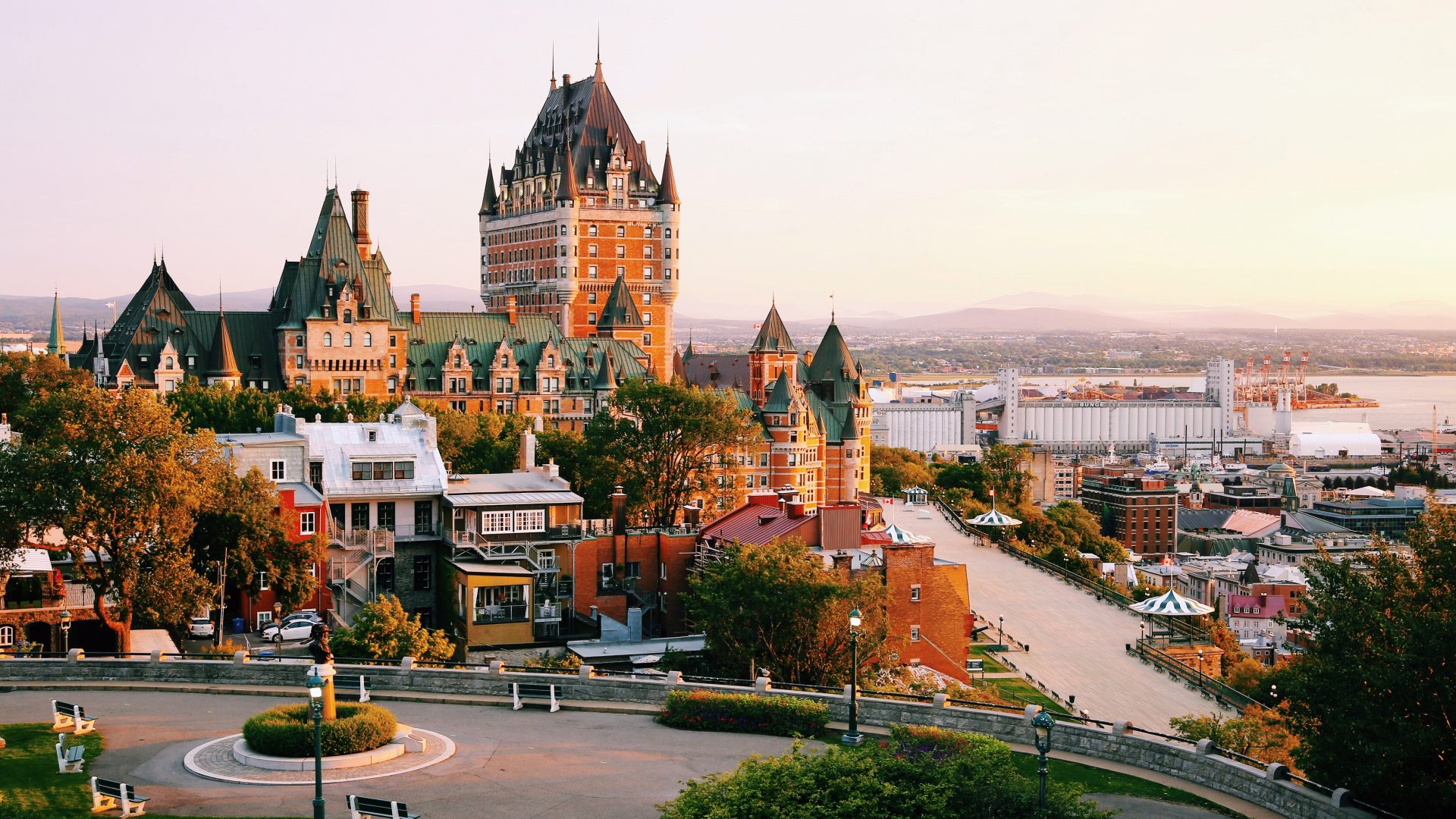I first visited Québec as a student at Université Laval’s French summer school for non-Francophones (non-native-speakers of French). There, I took graduate-level courses about Québécois culture, society and literature as well as advanced language courses.
What can I say? I fell in love with the city, the culture, and made some enduring, close friendships. My decision to study there has had a real influence on my life in many ways. I returned to the city three more summers to continue studying, and I have returned there as often as I can ever since.
If Québec city is not my favourite city in the whole world, it is one of my favourites. These notes are about Francophone and Spanish-speaking cultures, and in upcoming posts, I will elaborate more on specific aspects of Québec province and its culture for my readers. For now, this is my brief, initial invitation to you to visit this amazing city.
Québec City is the capital of Québec province. The city is located on the banks of the St. Lawrence River, and is a seven hour drive from Albany, NY. According to the 2011 Canadian census, the population of the city proper is 516,600 and 765,706 people live in the Metropolitan area.
Here are just a few reasons to visit Québec City:
- A quick get-away into another culture. Unless you are part of the Jet Set, chances are you can not fly to Europe for a long weekend, to enjoy discovering another culture. It is possible to fly, to take a bus (although the trip is long) or train (if you can stay overnight in Montreal) to Québec City. If you can drive from cities in the Northeast, you can transport yourself to another culture for a 3-day weekend for a relatively low cost.
- Vive la différence! Once you arrive, you will find yourself in an almost totally-French-language environment. According to the Statistics Canada website, 94.55% of Quebec City’s population speaks French as their mother tongue. While nearly everyone speaks French as their first language, more than a third can speak both French and English. Therefore, although you’ll always be able to find someone to turn to for assistance if you do not speak French, newspapers, radio, TV, restaurant menus, outdoor commercial and street signs will be almost exclusively in French. Most Québécois will say “Merci, monsieur/madame”. The French language is very important to most Francophone Québécois throughout the entire province. When Sting made the effort to speak French throughout an entire concert in the city, his thoughtfulness and acknowledgement of their distinctive culture was appreciated.
- A bit of the “old world” along with the new. Québec City was founded by Samuel de Champlain in 1608. Outside of Mexico, it is one of North America’s few walled cities. There is an entire Old Québec (both upper town and lower town) which is best explored on foot. You will walk winding, cobblestone streets, see Place Royale, the first town square where the city began, the basilica and Séminaire (a private secondary school) dating from the mid-17th century, Rue Petit Champlain (Street) with its restaurants and fine boutiques. The Château Frontenac is relatively modern, dating from 1893. This massive hotel dominates the city skyline and is ubiquitous on t-shirts, brochures and postcards. Québec City has been designated a “world heritage site” by UNESCO.
- Everywhere is a bit of history. Just wandering the streets of Old Québec, there are statues and monuments, plaques and murals. A good way to learn about the city’s and province’s history is to spend some time at the Musée de la Civilisation. And yes, the Plains of Abraham, today a public park, really is the site of the battle in 1759, when the British General Wolfe defeated General Montcalm, in what many Québécois refer to as “the conquest”. But ordinary citizens continue to live in the Old City as well as in more modern areas.
- Festivals and street life. Québec City is known for its Winter Carnival in February. If dog sled races, watching canoe races on the partially-frozen St. Lawrence, and winter sports aren’t your idea of fun, there are two major festivals in summer. In early July, le Féstival d’été (summer festival) features 10 or 11 days of mostly-outdoor concerts. Yes, you can see international performers such as Paul McCartney, Rod Stewart, Céline Dion, or Madonna, but it’s also a chance to discover Québécois singer-songwriters and singers and groups from France, Africa, or Latin America performing a wide variety of music; everything from hip hop to Bach. In August, the city celebrates its colonial-era heritage during les fêtes de la Nouvelle-France. When the weather is warm and pleasant, there are always street performers to enjoy in the Old City. These are just some of the many reasons to visit and then to re-visit Québec City.
